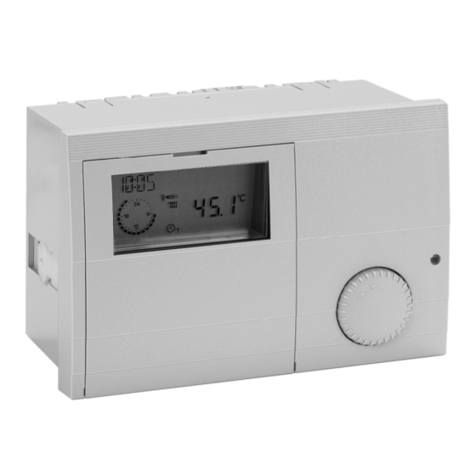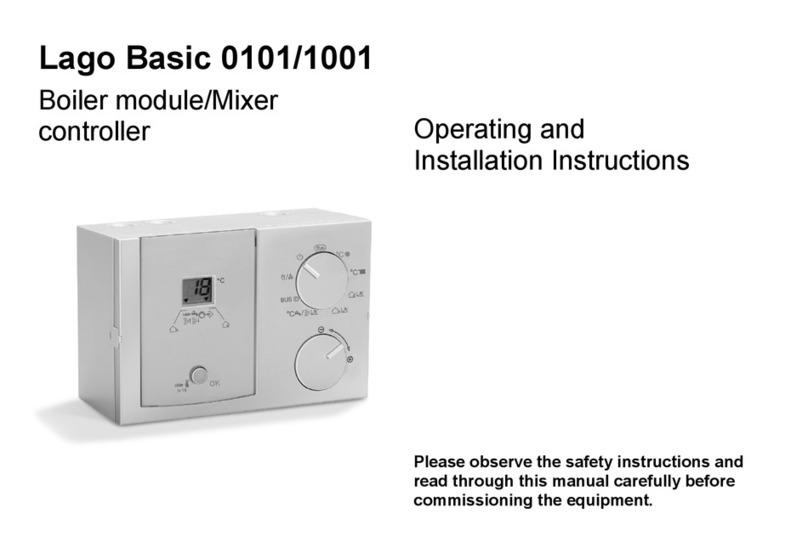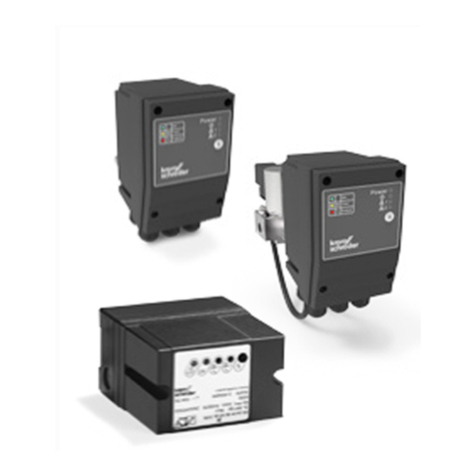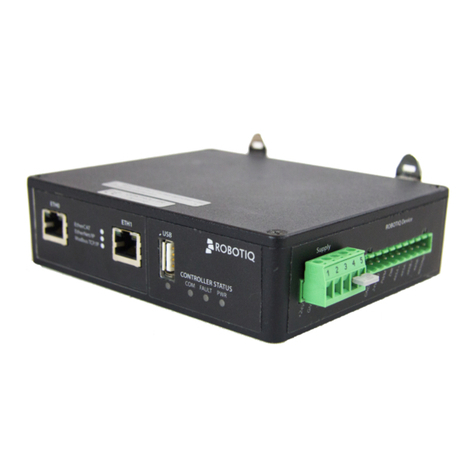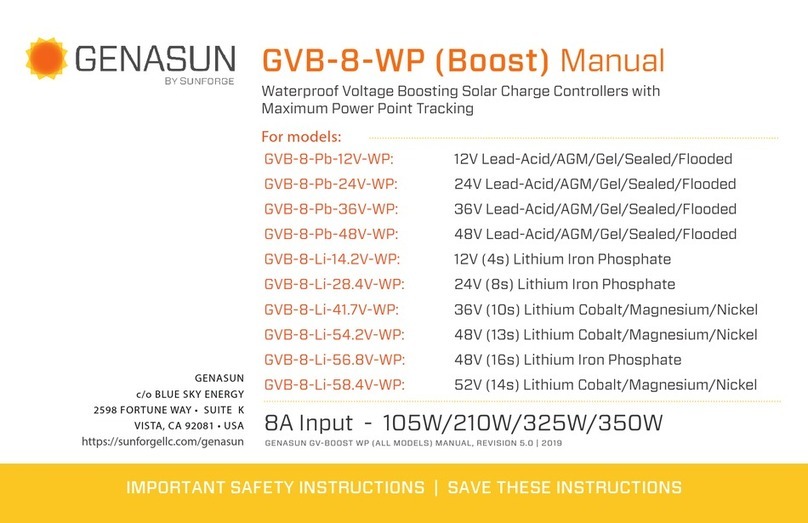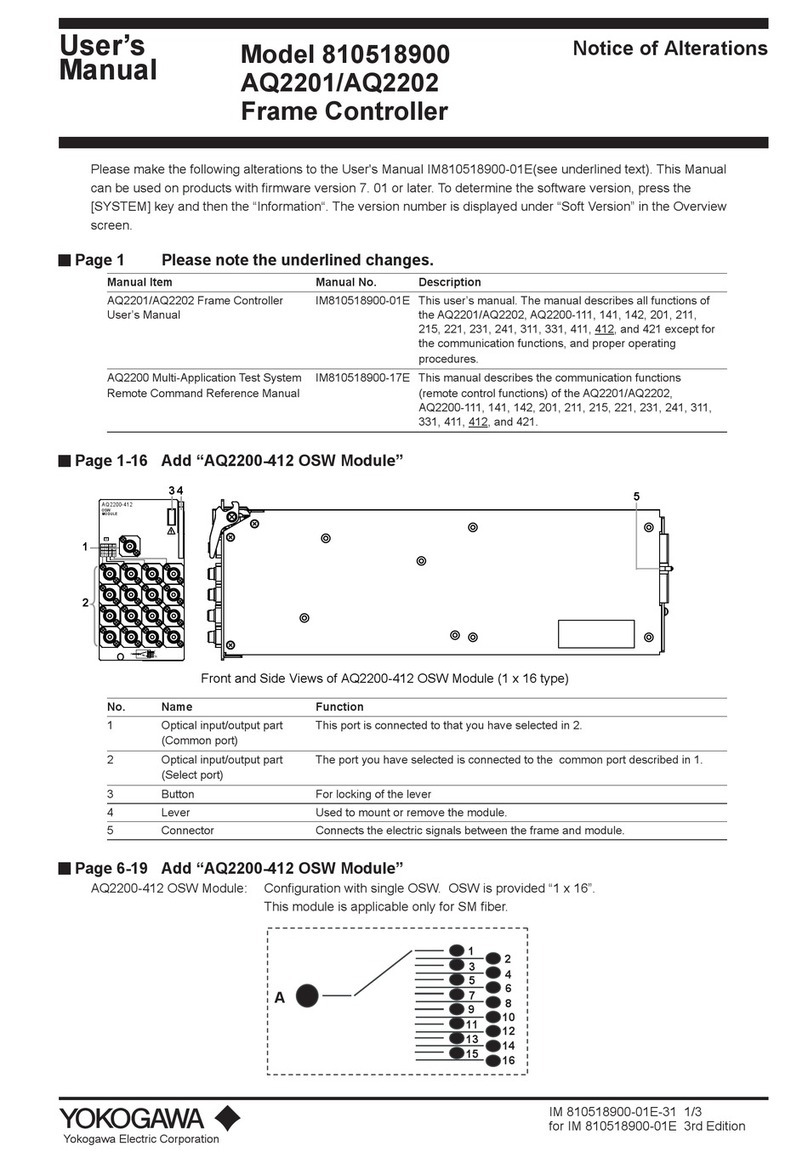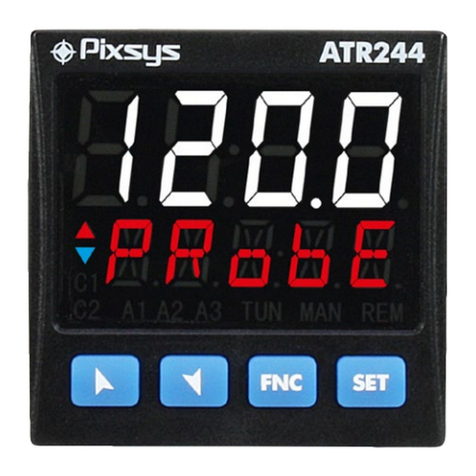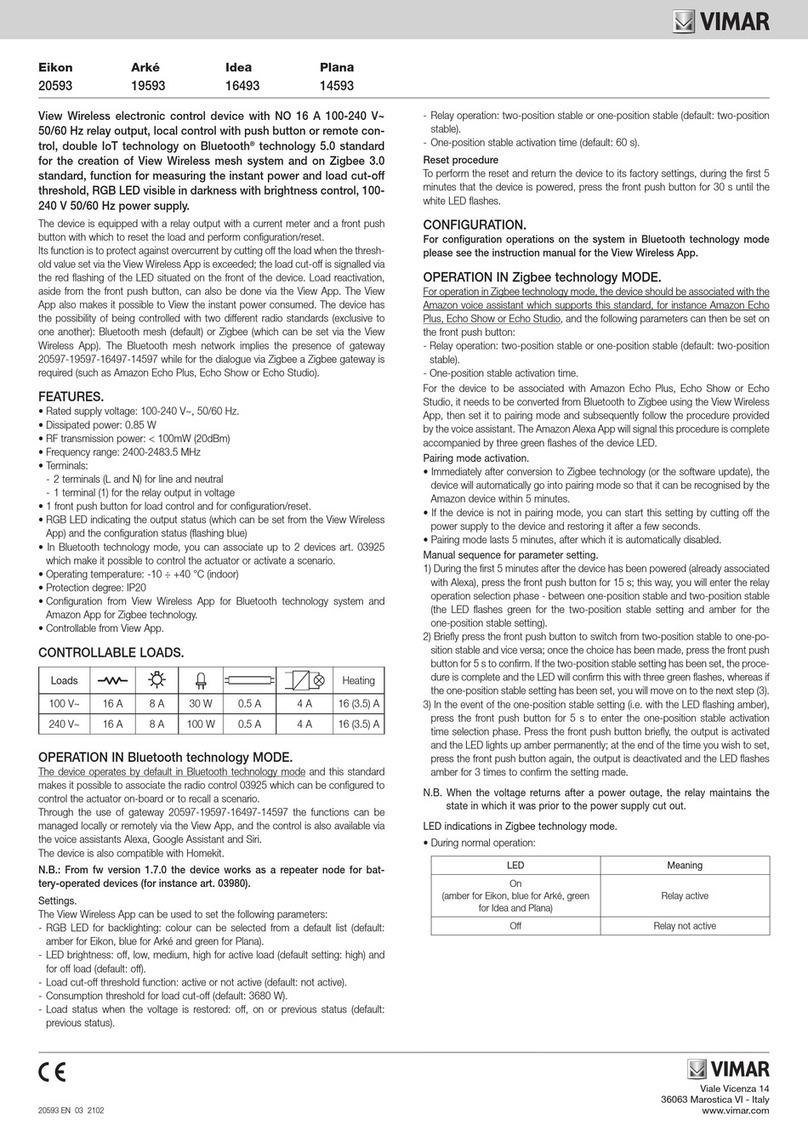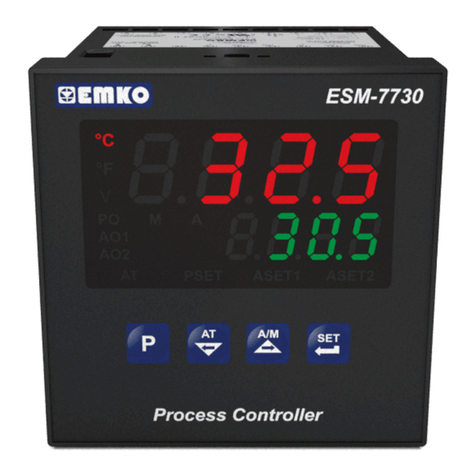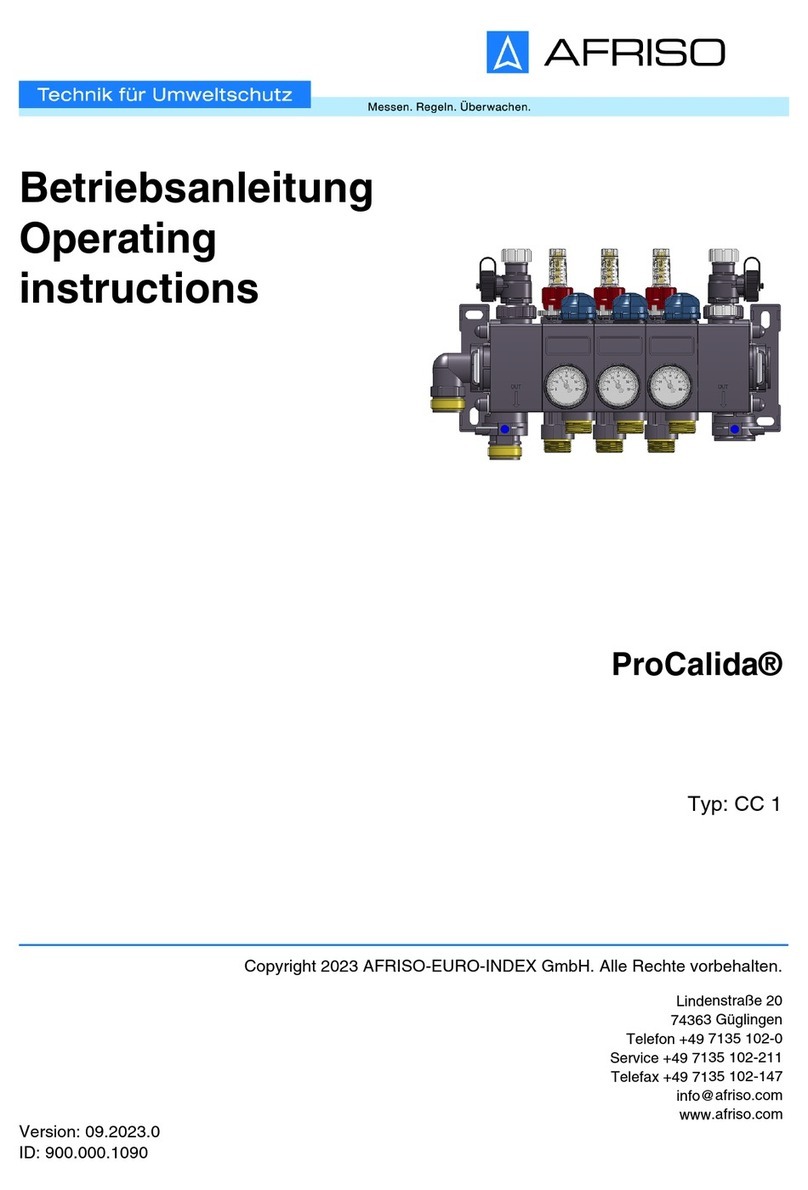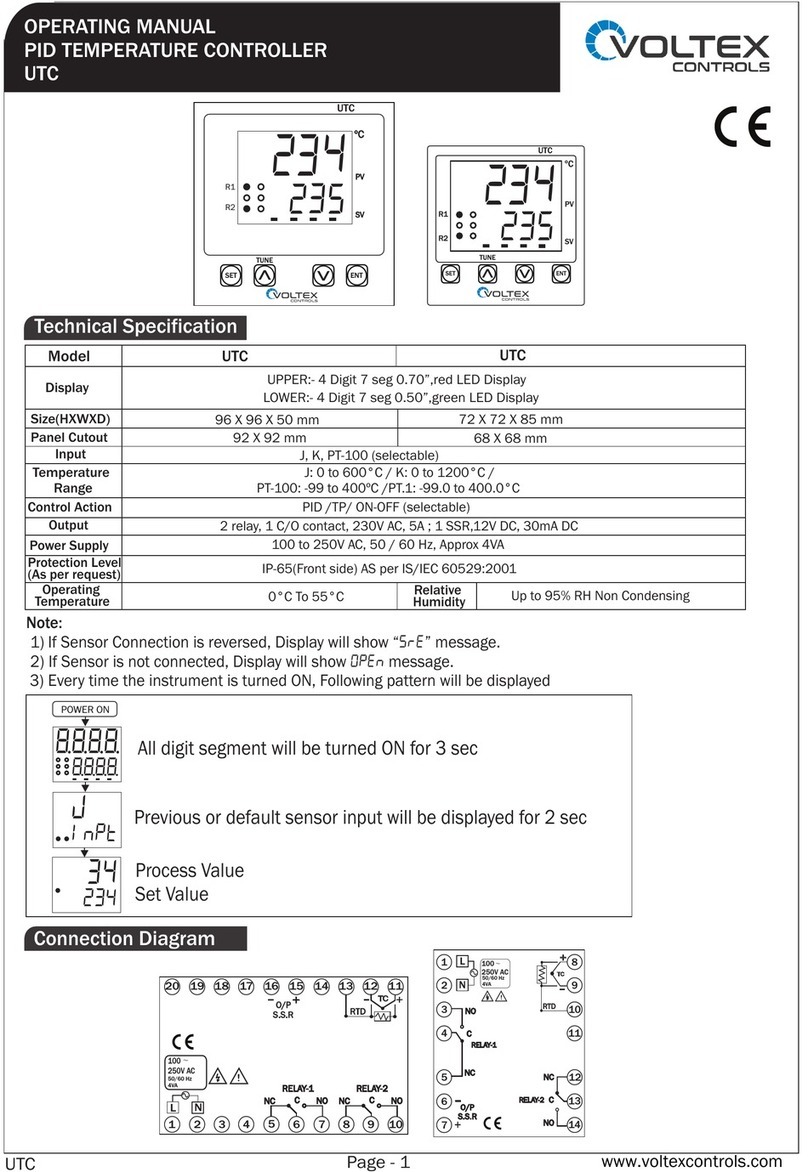Kromschroeder VAD User manual

CONTENTS
Cert. Version 07.19 · Edition 03.23 · EN · 03250481
DE, EN, FR, NL, IT, ES, DA, SV, NO, PT, EL, TR, CS, PL, RU, HU – www.docuthek.com
Pressure regulators with solenoid valve VAD, VAG, VAV,
VAH, flow rate regulators VRH, pressure regulators with
double solenoid valve VCD, VCG, VCV, VCH
1 Safety ................................1
2 Checking the usage .....................2
3 Installation ............................3
4 Installing the gas/air control lines ...........5
5 Wiring................................ 7
6 Tightness test..........................8
7 Commissioning.........................9
8 Replacing the actuator ..................11
9 Replacing the circuit board...............12
10 Maintenance.........................13
11 Accessories .........................13
12 Technical data .......................17
13 Air flow rate Q........................19
14 Designed lifetime .....................19
15 Certification .........................20
16 Logistics ............................21
17 Disposal ............................21
1 SAFETY
1.1 Please read and keep in a safe place
Please read through these instructions
carefully before installing or operating. Following the
installation, pass the instructions on to the operator.
This unit must be installed and commissioned in
accordance with the regulations and standards in
force. These instructions can also be found at www.
docuthek.com.
1.2 Explanation of symbols
1, 2, 3, a, b, c = Action
➔= Instruction
1.3 Liability
We will not be held liable for damage resulting from
non-observance of the instructions and non-com-
pliant use.
1.4 Safety instructions
Information that is relevant for safety is indicated in
the instructions as follows:
DANGER
Indicates potentially fatal situations.
WARNING
Indicates possible danger to life and limb.
CAUTION
Indicates possible material damage.
All interventions may only be carried out by qualified
gas technicians. Electrical interventions may only be
carried out by qualified electricians.
1.5 Conversion, spare parts
All technical changes are prohibited. Only use OEM
spare parts.
OPERATING INSTRUCTIONS

VAx · Edition 03.23
EN-2
2 CHECKING THE USAGE
Pressure regulators with solenoid valve VAD,
VAG, VAV, VAH
Type Designation of regulator type
VAD Pressure regulator with solenoid valve
VAG Air/gas ratio control with solenoid valve
VAV Variable air/gas ratio control with solenoid
valve
VAH Flow rate regulator with solenoid valve
Constant pressure governor VAD for shut-off and
precise control of the gas supply to excess air
burners, atmospheric burners or force draught gas
burners.
Air/gas ratio control VAG for shut-off and for main-
taining a constant air/gas pressure ratio of 1:1 for
modulating-controlled burners or with bypass valve
for stage-controlled burners. Can be used as zero
governor for gas engines.
Variable air/gas ratio control VAV for shut-off and
for maintaining a constant air/gas pressure ratio for
modulating-controlled burners. The transmission
ratio of gas to air can be set from 0.6:1 to 3:1. Pres-
sure fluctuations in the combustion chamber can be
compensated via the combustion chamber control
pressure psc.
Flow rate regulator VAH for maintaining a con-
stant gas/air ratio for modulating-controlled and
stage-controlled burners. The gas flow rate is con-
trolled proportionally to the air flow rate. In addition,
the flow rate regulator with gas solenoid valve shuts
off the gas or air supply safely.
Flow rate regulator VRH
Type Designation of regulator type
VRH Flow rate regulator
Flow rate regulator VRH for maintaining a con-
stant gas/air ratio for modulating-controlled and
stage-controlled burners. The gas flow rate is
controlled proportionally to the air flow rate.
Pressure regulators with double solenoid valve
VCD, VCG, VCV, VCH
Type
Combination of
gas solenoid valve +
regulator with solenoid valve
VCD VAS + VAD
VCG VAS + VAD
VCV VAS + VAV
VCH VAS + VAH
Gas solenoid valves VAS for safeguarding gas or
air on various appliances. Pressure regulators with
double solenoid valveVCx are combinations of two
gas solenoid valves with a pressure regulator.
This function is only guaranteed when used within
the specified limits– see page 17 (12 Technical
data). Any other use is considered as non-compliant.
2.1 Type code
VAD Pressure regulator with solenoid valve
VAG Air/gas ratio control with solenoid valve
VAH Flow rate regulator with solenoid valve
VAV Variable air/gas ratio control with sole-
noid valve
VRH Flow rate regulator
1-3 Sizes
15–50 Inlet and outlet flange nominal size
RRp internal thread
FFlange to ISO 7005
/N Quick opening, quick closing
WMains voltage 230V AC, 50/60Hz
YMains voltage 200V AC, 50/60Hz
QMains voltage 120V AC, 50/60Hz
PMains voltage 100V AC, 50/60Hz
KMains voltage 24V DC
SR Closed position switch with visual posi-
tion indicator, right
SL Closed position switch with visual posi-
tion indicator, left
GR Closed position switch for 24V and
visual position indicator, right
GL Closed position switch for 24V and
visual position indicator, left
-25 Outlet pressure pdfor VAD: 2.5–25mbar
-50 Outlet pressure pdfor VAD: 20–50mbar
-100 Outlet pressure pdfor VAD:
35–100mbar
AStandard valve seat
BReduced valve seat
EVAG, VAV, VAH, VRH: connection for air
control pressure: compression fitting
KVAG, VAV: connection for air control
pressure: plastic hose coupling
AVAG, VAV, VAH, VRH: connection for air
control pressure: 1/8" NPT adapter
NVAG: zero governor
VRH: no solenoid valve
2.2 Part designations
VAx..S,
VAx..G
VAD, VAG,
VAV, VAH
VRH
2
3
4
8
6
7
5
1
1 Solenoid actuator
2 Flow body
3 Connection box
4 Connection flange
5 Closed position indicator CPI
6 Connection parts
7 Regulator

VAx · Edition 03.23
EN-3
2.3 Type label
Mains voltage, electrical power consumption,
ambient temperature, enclosure, inlet pressure and
installation position: see type label.
Elster GmbH
Osnabrück, Germany
Vxx
.XXXX
3 INSTALLATION
CAUTION
Incorrect installation
Please observe the following to ensure that the
unit is not damaged during installation and oper-
ation:
– Sealing material and dirt, e.g. thread cuttings,
must not be allowed to get into the valve
housing.
– A filter must be installed upstream of every
system.
– Always install an activated carbon filter
upstream of the regulator when air is the
medium. Otherwise, the ageing of elastomer
materials will be accelerated.
– Dropping the device can cause permanent
damage. In this event, replace the entire device
and associated modules before use.
– Do not clamp the unit in a vice. Only secure the
flange by holding the octagon with a suitable
spanner. Risk of external leakage.
– It is not permitted to install gas solenoid
valveVAS downstream of flow rate regula-
torVAH/VRH and upstream of fine-adjusting
valveVMV. The VAS would no longer be able to
perform its function as a second safety valve if
installed in the above-mentioned position.
– If more than three valVario controls are installed
in line, the controls must be supported.
– Device with POC/CPI VAx..SR/SL: actuator
cannot be rotated.
– In the case of double solenoid valves, the
position of the connection box can only be
changed by removing the actuator and
reinstalling it rotated by 90° or180°.
When using a non-return gas valveGRS, we
recommend installing the non-return gas valve
upstream of the regulator and downstream of the
gas solenoid valves due to the permanent pressure
loss on theGRS.
➔When joining two valves, determine the position
of the connection boxes, push through the
knock-outs in the connection boxes and install
a cable gland set before installation in the
pipework, see accessories, cable gland set for
double solenoid valves.
➔Install the unit in the pipe free of mechanical
stress.
➔For retrofitting a second gas solenoid valve, use
the double block seal instead of O-rings. The
double block seal is supplied with the seal set,
see accessories, seal set for sizes1–3.
Installation position
VAD, VAG,
VAH, VRH
VAD, VAG,
VAV, VAH,
VRH
VAD, VAG, VAH: black solenoid actuator in the
vertical upright position or tilted up to the horizontal,
not upside down. In humid environments: black
solenoid actuator in the vertical upright position only.
VAG/VAH/VRH: in the horizontal position with mod-
ulating control: min. inlet pressure pu min.= 80mbar
(32"WC).
VAV: black solenoid actuator in the vertical position,
not upside down.
➔The housing must not be in contact with mason-
ry, minimum clearance 20mm (0.79").
➔Ensure that there is sufficient space for in-
stallation, adjustment and maintenance work.
Minimum clearance of 50cm (19.7") above the
black solenoid actuator.
➔To prevent vibrations, keep the volume between
the regulator and burner small by using short
pipes (≤ 0,5m, ≤ 19,7").
The inlet pressure pucan be measured on both
sides of the valve body.
p
upd
pd
The outlet pressure pd(pdand pd-) and the air
control pressure psa (psa and psa-) must only be
measured at the designated places on the regulator
using test nipples.

VAx · Edition 03.23
EN-4
VAD
pd
(psa
)
Test point for the gas outlet pressurepdon the regu-
lator body. A combustion chamber control line (psc)
can be connected at connectionpsa for maintaining
a constant burner capacity (1/8" coupling with
compression fitting for 6x1 tube).
VAG
p
sa
pd
p
sa
VAV
pd
p
sa
p
sc
VAH, VRH
psa
p
sa-
psa
pd
pd-
pd-
psa-
To increase the control accuracy, an external
impulse line can be connected, instead of pressure
test pointpd: Gas impulse line pd: distance from
flange ≥3xDN, use a 8x1mm steel tube and a
G1/8.. coupling for D= 8mm.
CAUTION
Do not bridge downstream VAS with external
impulse line.
Strainer
➔A strainer must be fitted in the unit on the inlet
side. If two or more gas solenoid valves are
installed in line, then a strainer only needs to be
fitted on the inlet side of the first valve.
Differential pressure orifice
➔An appropriate differential pressure orifice with
rubber seals Gmust be inserted at the outlet of
the unit, depending on the pipe.
G
Pipe
DN Differential pressure orifice
Colour Outlet dia. Order
No.
mm inch
VAx
115 Yellow 18.5 0.67
74922238
VAx
120 Green 25 0.98
74922239
VAx
125 Trans-
parent 30 1.18
74922240
VAx
240 Trans-
parent 46 1.81
74924907
VAx
350 Trans-
parent 58 2.28
74924908
If pressure regulator VAD/VAG/VAV1 is retrofitted
upstream of gas solenoid valve VAS1, a DN25
differential pressure orifice with outlet opening
d=30mm(1.18") must be inserted at the outlet of
the pressure regulator.
In the case of pressure regulator VAx115 or
VAx120, the DN25 differential pressure orifice
must be ordered separately and retrofitted, Order
No.74922240.
➔The retaining frame must be fitted to secure the
differential pressure orifice at the outlet of the
regulator.
Retaining frame
➔If two controls (regulators or valves) are assem-
bled, a retaining frame with double block seal
must be fitted.
Order No. for seal set: size 1: 74921988, size 2:
74921989, size 3: 74921990.

VAx · Edition 03.23
EN-5
Compression fittings
➔The seals in some compression fittings are
approved for temperatures of up to 70°C (158°F).
This temperature limit will not be exceeded
if the flow through the pipe is at least 1m3/h
(35.31SCFH) of gas and the maximum ambient
temperature is 50°C (122°F).
1 Remove the adhesive label or screw cap from
the inlet and outlet.
2 Obey the direction of flow as marked on the
housing.
3.1 VAx with flanges
a b c
3.2 VAx without flanges
a b c
➔O-ring and strainer (Fig. c) must be fitted.
d e
➔Note the recommended tightening torques for
the connection parts. See page 18 (12.2.1
Tightening torque).
f g
4 INSTALLING THE GAS/AIR CON-
TROL LINES
CAUTION
Incorrect installation
Please observe the following to ensure that the
unit is not damaged during installation and oper-
ation:
– Fit control lines so that no condensation can
enter the unit.
– The control lines must be as short as possible.
Internal diameter ≥3.9mm(0.15").
– Any bends, restriction points, deviations or air
control valves must be at a distance of at least 5
x DN from the connection.
– Check the connections, pressures, adjusting
range, transmission ratio and pressure
differentials. See page 18 (12.2 Mechanical
data).
VAG
Installing the air control linepsa
1 Install the connection for the air control line in the
centre of a straight pipeline which is at least
10xDN long.
➔VAG..K: 1 x 1/8" coupling for plastic hose
(internal dia. 3.9mm(0.15"), external dia.
6.1mm(0.24")).
➔VAG..E: 1 x 1/8" coupling with compression
fitting for 6 x 1 tube.
➔VAG..N: connection psa must remain open.
5xDN
5xDN
psa

VAx · Edition 03.23
EN-6
VAV
Installing the air control linepsa and the com-
bustion chamber control linepsc
psc
psa
VAS
VAV
DG..C
(DG..VT)
min.
➔VAV..K: 2 plastic hose couplings (internal dia.
3.9mm(0.15"); external dia. 6.1mm(0.24"))
available.
➔Do not remove the couplings or replace them
with other types of coupling.
1 Route air control linepsa and combustion
chamber control linepsc to the test points for air
and combustion chamber pressure.
➔If psc is not connected, do not plug the opening!
2 Install the connection for the air control line in the
centre of a straight pipeline which is at least
10xDN long.
5xDN
5xDN psc
psa
VAH/VRH
Installing the air control lines psa/psa- and the
gas control line pd-
➔3 x 1/8" couplings with compression fitting for
6x1 tube.
1 To measure the differential air pressure, install a
measuring orifice in the air line, ensuring that the
inlet and outlet section is ≥5DN.
2 Connect the air control linepsa to the inlet of the
measuring orifice and the air control linepsa- to
the outlet of the measuring orifice.
➔pdis an internal hole/feedback in the unit.
VAH
VMV
VMO
VAH
psa
pd-
psa-
M
VRH
VMV
VRH
psa psa-
pd-
M
3 We recommend installing a fine-adjusting valve
VMV directly downstream of the regulator in the
gas line. See “Filter module VMF, measuring
orifice VMO, fine-adjusting valve VMV” operating
instructions. The instruction manual can also be
found at www.docuthek.com.
2,5 mm
➔If, instead of installing a VMV, a measuring orifice
is installed in the gas line, ensure that the inlet
and outlet section is ≥5DN.
4 Connect the gas control line pd- to the VMV or to
the measuring orifice.
pd-
5xDN
5xDN
psa-
psa

VAx · Edition 03.23
EN-7
5 WIRING
WARNING
Risk of injury!
Please observe the following to ensure that no
damage occurs:
– Electric shocks can be fatal! Before working on
possible live components, ensure the unit is
disconnected from the power supply.
– The solenoid actuator heats up during
operation. Surface temperature approx. 85°C
(approx. 185°F).
➔Use temperature-resistant cable (>80°C).
1 Disconnect the system from the electrical power
supply.
2 Shut off the gas supply.
➔UL requirements for the NAFTA market. To
maintain the UL environmental rating Type 2, the
enclosure openings shall be closed with fittings
rated UL Type 2; 3; 3R; 3RX; 3S; 3SX; 3X; 4X;
5; 6; 6P; 12; 12K or 13. Gas solenoid valves
shall be protected by a branch circuit protective
device not exceeding 15A.
➔Wiring to EN60204-1.
➔Push through and remove the knock-out in the
connection box before removing the cover. If the
M20 cable gland or plug is already fitted, it is not
necessary to remove the knock-out.
3 4
M20 cable gland
a b c
d e
(+)
LV1 N
(-)
LV1 NLV1 N
(+) (+) (-)(-)
Plug
➔LV1V1 (+) = black, LV1V2 (+) = brown, N (–) = blue
a b
(+)
LV1 N
(-)
LV1 NLV1 N
(+) (+) (-)(-)
Socket
➔1 = N (–), 2 = LV1V1 (+), 3 = LV1V2 (+)
a b c
d e
21
21
3

VAx · Edition 03.23
EN-8
Closed position indicator
➔VAx open: contacts 1and2closed,
VAx closed: contacts 1and 3closed.
➔Indicator of closed position indicator: red = VAx
open, white = VAx closed.
➔Double solenoid valve: if a plug with socket is
fitted, only one closed position indicator can be
connected.
CAUTION
Please observe the following to ensure smooth
operation:
– The closed position indicator is not suitable for
frequent cycling operation.
– Route valve and closed position indicator cables
separately through M20 cable glands or use two
separate plugs. Otherwise, there is a risk of
interference between valve voltage and closed
position indicator voltage.
➔To make wiring easier, the connection terminal for
the proof of closure switch can be removed.
1
2
Valve open
Valve closed
COM 3
1 32
LV1
(+)
N
(-)
1 32 LV1
(+)
N
(-)
1 3
2LV1
(+)
N
(-) 132 LV1
(+)
N
(-)
LV1
(+)
N
(-)
1
2
Valve open
Valve closed
COM 3
1 32
LV1
(+)
N
(-)
➔When installing two plugs on VAx a with proof of
closure switch: label the sockets and plugs to
avoid confusion.
21
3
21
1
COM
2
Valve open
Valve closed
3
➔Ensure that the connection terminal for the
closed position indicator has been reconnected.
Finishing the wiring
5
6 TIGHTNESS TEST
1 Close the gas solenoid valve.
2 To be able to check the tightness, shut off the
downstream pipeline close to the valve.
➔On the VAH/VRH, the control line pd- leads to
gas-filled space in the regulator. It must be con-
nected before the tightness test.
3
0
4
5
0
6 Open the pressure regulator.
7
0
8
9 Tightness OK: open the pipeline.
➔Pipeline leaking: replace the seal on the flange,
see accessories.
Order No. for seal set: size 1: 74921988, size 2:
74921989, size 3: 74921990.
Then check for tightness once again.
➔Unit leaking: remove the unit and return it to the
manufacturer.

VAx · Edition 03.23
EN-9
7 COMMISSIONING
➔Ensure that the length of the tube is as short as
possible for the determining of the pressures
during the measurement process.
VAD
Setting the outlet pressure pd
➔The outlet pressure is set to pd= 10mbar at the
factory.
pd
[mbar] ["WC]
VAD..-25 2.5–25 1–10
VAD..-50 20–50 8–19.7
VAD..-100 35–100 14–40
1 Switch on the burner.
➔Breathing orifice Amust remain open.
2 Set the regulator to the required outlet pressure.
+
_
0
pd
2,5 mm
A
3 Close off the test point again once the pressure
has been set.
VAG
pd= Outlet pressure
psa = Air control pressure
➔Factory setting: pd= psa - 1.5mbar (0.6"WC);
actuator pointing upwards and an inlet pressure
of 20mbar(7.8"WC)
1 Switch on the burner.
Setting the low-fire rate
➔In applications with excess air, the values for
pdand psa may be below the limit, see page
18 (12.2 Mechanical data). No situation which
would jeopardize safety must arise. Avoid CO
formation.
2 Set the regulator to the required outlet pressure.
2,5 mm 0
0
pd
psa
3 Close off the test point again once the pressure
has been set.
Setting the high-fire rate
➔Set the high-fire rate using restricting orifices or
adjustment elements on the burner.
VAV
pd= Outlet pressure
psa = Air control pressure
psc = Combustion chamber control pressure
Setting the low-fire rate
➔If the burner operates at low-fire rate, the gas/
air mixture can be changed by adjusting the
adjusting screw“N”.
-1
0+0,5-0,5
–
+1
-1,5
mbar
+1,5
0,6
1 1,5
2
3
N V
+
+
–
+
_
2,5 mm
CAUTION
psa-psc≥0.4mbar (≥0.15"WC). Controller
acting time for the reference variable (air butterfly
valve): min. to max. >5s, max. to min. >5s.
➔Factory setting for transmission ratio of gas to
air: V=1:1, zero pointN=0.
Presetting
1 Set zero point Nand transmission ratio Vto
scale in accordance with burner manufacturer’s
specifications.
2 Measure gas pressurepd.
0
0
p
d
p
sa
psc
0
3 Start the burner at low-fire rate. If the burner
does not start, turn Nslightly in direction+ and
repeat start.
4 Gradually increase the burner to high fire and, if
necessary, adjust the gas pressure at V.
5 Set the minimum and maximum capacity on the
air control valve in accordance with burner
manufacturer’s specifications.

VAx · Edition 03.23
EN-10
Final adjustment
6 Set the burner to low fire.
7 Conduct a flue gas analysis and set the gas
pressure at Nto the desired analysis value.
8 Set the burner to high fire and set the gas
pressure at Vto the desired analysis value.
9 Repeat the analysis at low and high fire and
correct Nand Vif necessary.
10 Close off all test points. Do not close off
connectionpsc if not used!
➔It is advisable to start the burner at a level higher
than the minimum setting (start gas rate) to
ensure reliable flame formation.
Calculation
If the combustion chamber control pressurepsc is
not connected:
pd= V x psa + N
If combustion chamber control pressurepsc is
connected:
(pd- psc) = V x (psa - psc) + N
Testing control capacity
DANGER
Risk of explosion!
If the control capacity is insufficient, the system
may not be operated.
11 Set the burner to high fire.
12 Measure the gas pressure at the inlet and outlet.
13 Slowly close the manual valve upstream of the
regulator until the gas inlet pressurepudrops.
➔The gas outlet pressurepdshould not drop,
however. Otherwise, the setting should be re-
checked and adjusted.
14 Reopen the manual valve.
VAH, VRH
pu= Inlet pressure
pd= Outlet pressure
Δpd= Differential gas pressure (outlet pressure)
psa = Air control pressure
Δpsa = Differential air pressure (air control pressure)
➔A gas/air mixture may be applied at the psa- con-
nection for the air control pressure.
➔Inlet pressure pu: max. 500mbar
➔Air control pressure psa: 0.6 to 100mbar
➔Differential air pressure Δpsa (psa - psa-)= 0.6to
50mbar
➔Differential gas pressure Δpd(pd- pd-)= 0.6to
50mbar
➔The impulse lines psa, psa- and pd- must be laid
correctly.
VMV
VMO
VAH
psa
pd-
psa-
M
Presetting
1 Set the minimum and maximum capacity on the
air control valve in accordance with burner
manufacturer’s specifications.
2 Switch on the burner.
0
0
pd
psa
pd-
psa-
3 Open the fine-adjusting valve VMV slowly, from
the ignitable mixture with excess air to the
required value.
Setting the high-fire rate
4 Slowly increase the burner to high fire and set
the differential gas pressure on the fine-adjusting
valveVMV in accordance with burner manufac-
turer’s specifications.
Setting the low-fire rate
5 If the burner operates at low-fire rate, the gas/air
mixture can be changed by adjusting the
adjusting screw N.
+3
0-1,5+1,5
–
-3
+5
mbar
-5
N
+
2,5 mm
➔Factory setting: zero point N = -1.5mbar
CAUTION
Δpsa = psa - psa- ≥ 0.6mbar (≥ 0.23 "WC). Con-
troller acting time for the reference variable (air
butterfly valve): min. to max. >5s, max. to min.
>5s.
6 Set the burner to low fire.
7 Conduct a flue gas analysis and set the gas
pressure at Nto the desired analysis value.
8 Set the burner to high fire and set the differential
gas pressure to the desired analysis value.
9 Repeat the analysis at low and high fire and
correct if necessary.
10 Close off all test points.

VAx · Edition 03.23
EN-11
8 REPLACING THE ACTUATOR
➔The actuator adapter set for the new actuator
must be ordered separately.
VAx 2 – 3,
VCx 2 – 3
VAx 1,
VCx 1
VAx 1, VCx 1: Order No. 74924468,
VAx 2–3, VCx 2–3: Order No. 74924469.
8.1 Removing the actuator
VAx, VCx
1 Disconnect the system from the electrical power
supply.
2 Close the gas supply.
3 4 5
6 7 8
➔Remove the M20 cable gland or other type of
connection.
VAx, VCx without closed position indicator
a b c
VAx, VCx with closed position indicator
a b c
d e
8.2 Fitting the new actuator
➔The seals of the actuator adapter set are covered
with a non-stick coating. No additional grease is
required.
➔Depending on the construction stage of the unit,
there are two different methods for replacing the
actuator:
If the unit concerned has no O-ring in this place
(arrow), replace the actuator as described here.
Otherwise, go to the next note.
1
2 Insert seals.
3 Position of the metal ring can be selected.
4
VAx 1, VAN 1 VAx 2–3, VAN 2
5 Slide seal under the second groove.
6
➔If the unit concerned has an O-ring in this place
(arrow), replace the actuator as described here:
VAx/VCx 1: use all seals from the actuator adapt-
er set. VAx/VCx 2–VAx/VCx 3: use the small seal
from the actuator adapter set and only one of
the large seals.
1 2
VAx 1–3,
VAN 1–2
3 Slide seal under the second groove.
4

VAx · Edition 03.23
EN-12
VAx, VCx without damping unit
1 2 3
4 5 6
7 Open the gas solenoid valve and the gas supply.
VAx, VCx with POC/CPI
➔Depending on the switch design, one of the two
enclosed seals must be inserted in the connec-
tion box housing.
1 2 3
4 5 6
7 8 9
10 11 12
13 Open the gas solenoid valve and the gas supply.
9 REPLACING THE CIRCUIT BOARD
WARNING
Risk of injury!
Please observe the following to ensure that no
damage occurs:
– Electric shocks can be fatal! Before working on
possible live components, ensure the unit is
disconnected from the power supply.
– The solenoid actuator heats up during
operation. Surface temperature approx. 85°C
(approx. 185°F).
➔We recommend making a note of the contact
assignment for subsequent rewiring.
➔1 = N (–), 2 = LV1 (+)
1 Disconnect the system from the electrical power
supply.
2 Close the gas supply.
3 4
(+)
LV1 N
(-)
➔If a POC switch is wired, disconnect it.
5
➔Keep all components for subsequent assembly
in a safe place.
6 7 8
9 10 11
12 Insert new circuit board.
13 Follow the reverse procedure when reassembling.
14 Re-establish all connections.
➔Wire the new circuit board, see page 7 (5
Wiring).
➔Leave the connection box open for the electrical
system test.
9.1 Electric strength test
1 Once the wiring has been carried out and before
the devices are commissioned, a voltage surge
test must be carried out.
Test points: mains connection terminals (N,L) with
respect to PEwire terminal(PE ).
Rated voltage >150V: 1752VAC or 2630VDC,
testing time 1second.
Rated voltage ≤150V: 1488VAC or 2240VDC,
testing time 1second.
2 Screw the cover onto the connection box once
the electrical test has been completed success-
fully.
3 The unit is fit for use again.

VAx · Edition 03.23
EN-13
10 MAINTENANCE
CAUTION
In order to ensure smooth operation, check the
tightness and function of the unit:
– Once per year, twice per year in the case of
biogas; check for internal and external tightness,
see page 8 (6 Tightness test).
– Check electrical installations once a year in line
with local regulations; pay particular attention to
the PEwire, see page 7 (5 Wiring).
➔If the flow rate has dropped, clean the strainer
and the differential pressure orifice.
➔If more than one valVario control is installed in
series: the controls may only be removed from
the pipeline and reinstalled on the inlet and outlet
flange all at once.
➔We recommend replacing the seals, see acces-
sories, page 13 (11.2 Seal set for sizes 1–3).
1 Disconnect the system from the electrical power
supply.
2 Shut off the gas supply.
3 Detach control line(s).
4 Undo connection parts.
5 6 7
8 9 10
11 12
13 Once the seals have been replaced, refit the
strainer and the differential pressure orifice and
install the pressure regulator in the pipeline again.
14 Reattach control line(s) to the regulator.
➔The pressure regulator remains closed.
15 Then check the unit for internal and external
tightness, see page 8 (6 Tightness test).
11 ACCESSORIES
11.1 Differing illustrations
Illustrations may differ from your VAx.
11.2 Seal set for sizes 1–3
When retrofitting accessories or a second valVario
control or when servicing, we recommend replacing
the seals.
C
AB
C
E
D
VAx1–3
VA1, Order No. 74921988,
VA2, Order No. 74921989,
VA3, Order No. 74921990.
Scope of delivery:
A1 x double block seal,
B1 x retaining frame,
C2 x O-rings (flange),
D2 x O-rings (pressure switch),
for test nipple/screw plug:
E2 x sealing rings (flat sealing),
2 x profiled sealing rings.
VCx1-3
VA1, Order No. 74924978,
VA2, Order No. 74924979,
VA3, Order No. 74924980.
Scope of delivery:
A1 x double block seal,
B1 x retaining frame.

VAx · Edition 03.23
EN-14
11.3 Pressure switch for gas DG..VC
The pressure switch for gas monitors the inlet pres-
surepu, the interspace pressurepzand the outlet
pressurepd.
➔Monitoring the inlet pressure pu: the pressure
switch for gas is mounted on the inlet side.
Monitoring the outlet pressure pd: the pressure
switch for gas is mounted on the outlet side.
p
u
pd
Scope of delivery:
1xpressure switch for gas,
2xself-tapping retaining screws,
2xsealing rings.
Also available with gold-plated contacts for voltages
of 5 to 250V.
When using two pressure switches on the same
side of the double solenoid valve, only the combina-
tion DG..C..1 and DG..C..9 may be used for design
reasons.
DG..C..1
DG..C..1
DG..C..9
pu
pz
DG..C..9
➔When retrofitting the pressure switch for gas,
see enclosed operating instructions “Pressure
switches for gas DG..C”, section entitled “Mount-
ing the DG..C.. on valVario gas solenoid valves”.
➔The switching point is adjustable via hand wheel.
1 2 3
Type
Adjusting range
(adjusting
tolerance =
±15% of the
scale value)
Mean switching
differential at
min. and max.
setting
[mbar] ["WC] [mbar] ["WC]
DG17VC 2–17 0.8–6.8 0.7–1.7 0.3–0.8
DG40VC 5–40 2–16 1–2 0.4–1
DG110VC 30–110 12–44 3–8 0.8–3.2
DG300VC 100–
300 40–120 6–15 2.4–8
➔Deviation from the switching point during testing
pursuant to EN1854 Gas pressure switches: ±15%.
11.4 Cable gland set
When wiring double solenoid valve VCx1–3, the
connection boxes are to be connected using a
cable gland set.
The cable gland set can only be used if the connec-
tion boxes are at the same height and on the same
side and if both valves are equipped either with or
without a proof of closure switch.
VCx 1 VCx 2 VCx 3
VA1, Order No. 74921985,
VA2, Order No. 74921986,
VA3, Order No. 74921987.
➔We recommend preparing the connection boxes
before the double solenoid valve is installed in
the pipework. Alternatively, one of the actuators
must be dismantled as described below and
reinstalled rotated by 90° in preparation for instal-
lation of the double solenoid valve.
1 Disconnect the system from the electrical power
supply.
2 Close the gas supply.
3 4 5
6 7 8
➔In both connection boxes, push through the
knock-out for the cable gland set – then remove
the covers. The covers must not be taken off
before pushing through the knock-outs as it
prevents damage to the connection boxes.
9 10
11 12 13
14 15 16

VAx · Edition 03.23
EN-15
17 Connect the valves to the electrical power supply,
see section entitled “Wiring”.
18
11.5 Attachment block VA1–3
For locked installation of pressure gauge or other
accessories on the gas solenoid valve VAS1–3.
B
A
C
Attachment block Rp1/ 4, Order No. 74922228,
Attachment block 1/4NPT, Order No. 74926048.
Scope of delivery:
A1 x attachment block,
B2 x self-tapping screws for installation,
C2 x O-rings.
1 Disconnect the system from the electrical power
supply.
2 Close the gas supply.
➔Use the enclosed self-tapping screws for instal-
lation.
3 4 5
6 7 8
9
10 Shut off the downstream gas pipeline close to
the pressure regulator.
11 Open the pressure regulator.
12 13
11.6 Bypass/pilot gas valves
Prepare the installed main valve.
1 Disconnect the system from the electrical power
supply.
2 Close the gas supply.
➔Turn the actuator so that the side on which
the bypass/pilot gas valve is to be installed is
accessible.
3 4 5
11.6.1 VBY for VAx 1
Ambient temperature: 0 to +60°C (32 to 140°F), no
condensation permitted.
Enclosure: IP 54.
Scope of delivery
B
C
A
VBY 8
VAS 1
VBY8I as bypass valve
A1 x bypass valve VBY 8I
B2 x retaining screws with 4 x O-rings: both retain-
ing screws have a bypass orifice
VBY..I
C1 x grease for O-rings
➔The screw plug at the outlet remains in place.
VBY8R as pilot gas valve
A1 x pilot gas valve VBY 8R
B2 x retaining screws with 5 x O-rings: one retain-
ing screw has a bypass orifice (2xO-rings), the
other does not (3xO-rings)
VBY..R
C1 x grease for O-rings
➔Remove the screw plug at the outlet and con-
nect the Rp1/4 pilot gas supply line.

VAx · Edition 03.23
EN-16
Mounting the VBY
1 Grease O-rings.
2 3 4
5
➔Tighten the retaining screws alternately so that
VBY and VAx are flush.
Setting the flow rate
➔The flow rate can be set by turning the flow rate
restrictor (4mm hexagon socket) 1/4 of a turn.
+
-
➔Only adjust the flow rate restrictor in the marked
range, otherwise the required gas volume will not
be reached.
6 Wire the socket, see section entitled “Wiring”.
7 Check for tightness, see accessories, “Checking
the bypass/pilot gas valve for tightness”.
11.6.2 VAS1 for VAx 1, VAx 2, VAx 3
Scope of delivery
VAS 1 VAS 2/3
A
C
DF
B
E
A1 x bypass/pilot gas valve VAS1,
B4 x O-rings,
C4 x double nuts for VAS1 –> VAx1,
C4 x spacer sleeves for VAS1 –> VAx2/VAx3,
D4 x connection parts,
E1 x mounting aid.
Pilot gas valve VAS1:
F1 x connection pipe, 1 x sealing plug, if the pilot
gas valve has a threaded flange on the outlet side.
Bypass valve VAS1:
F2 x connection pipes, if the bypass valve has a
blind flange on the outlet side.
Standard: Ø10mm.
➔Always use a connection pipe Fat the inlet of the
main valve.
➔For a bypass valve: use connection pipe F
Ø10mm(0.39") at the outlet of the main valve if
the bypass valve’s outlet flange is designed as a
blind flange.
➔For the pilot gas valve: insert sealing plug Fat
the outlet of the main valve if the pilot gas valve’s
outlet flange is designed as a threaded flange.
1
F
B
B
2 3
4 Remove the sealing plugs on the mounting side
of the bypass valve.
Mounting the VAS1 to VAx 1
a Remove the nuts from the connection parts on
the mounting side of the main valve.
b Remove the connection parts of the bypass/pilot
gas valve.
➔Use the new connection parts Cand Dfrom the
scope of delivery for the bypass/pilot gas valve.
➔Note the recommended tightening torques for
the connection parts. See page 18 (12.2.1
Tightening torque).
c
C
D
d
e f
g Wire the bypass/pilot gas valve VAS1, see
section entitled “Wiring”.
h Check for tightness, see accessories, “Checking
the bypass/pilot gas valve for tightness”.
Mounting the VAS1 to VAx 2 or VAx 3
➔The connection parts of the main valve remain
mounted.
a Remove the connection parts of the bypass/pilot
gas valve.
b Use the new connection parts Cand Dfrom the
scope of delivery for the bypass/pilot gas valve.
For VAx2 and VAx3, the connection parts
consist of self-tapping screws.
➔Note the recommended tightening torques for
the connection parts. See page 18 (12.2.1
Tightening torque).

VAx · Edition 03.23
EN-17
c
C
D
d
e
f Wire the bypass/pilot gas valve VAS1, see
section entitled “Wiring”.
g Check for tightness, see accessories, “Checking
the bypass/pilot gas valve for tightness”.
11.6.3 Checking the bypass/pilot gas valve for
tightness
1 To be able to check the tightness, shut off the
downstream pipeline as close as possible to the
valve.
2 Close the main valve.
3 Close the bypass/pilot gas valve.
CAUTION
Possible leakage!
– If the actuator of the VBY is rotated, the
tightness can no longer be guaranteed. To
ensure that there are no leaks, check the
actuator of the VBY for tightness.
a b
Check the bypass/pilot gas valve for tightness at the
inlet and outlet.
4 5
6
0
7 Open the bypass or pilot gas valve.
Bypass valve
8 9
Pilot gas valve
10 11
12
12 TECHNICAL DATA
12.1 Ambient conditions
Icing, condensation and dew in and on the unit are
not permitted.
Avoid direct sunlight or radiation from red-hot surfac-
es on the unit. Note the maximum medium and
ambient temperatures!
Avoid corrosive influences, e.g. salty ambient air or
SO2.
The unit may only be stored/installed in enclosed
rooms/buildings.
The unit is suitable for a maximum installation height
of 2000m AMSL.
Ambient temperature: -20 to +60°C (-4 to +140°F),
no condensation permitted.
Long-term use in the upper ambient temperature
range accelerates the ageing of the elastomer ma-
terials and reduces the service life (please contact
manufacturer).
Storage temperature = transport temperature: -20
to +40°C (-4 to +104°F).
Enclosure: IP65.
This unit is not suitable for cleaning with a high-pres-
sure cleaner and/or cleaning products.

VAx · Edition 03.23
EN-18
12.2 Mechanical data
Gas types: natural gas, LPG (gaseous), biogas
(max. 0.1%-by-vol. H2S) or clean air; other types
of gas on request. The gas must be clean and dry
in all temperature conditions and must not contain
condensate.
Medium temperature = ambient temperature.
CE and FM approved, UL listed, max. inlet pres-
surepu: 10–500mbar (1–200"WC).
FM approved, non operational pressure: 700mbar
(10psig).
ANSI/CSA approved: 350mbar (5psig).
Opening times:
VAx../N, quick opening: ≤1s,
VAx../N, quick closing: <1s.
Valve housing: aluminium, valve seal: NBR.
Connection flanges with internal thread: Rp to
ISO7-1, NPT to ANSI/ASME.
Safety valve:
Class A, Group 2 pursuant to EN13611 and
EN161,
230VAC, 120VAC, 24VDC:
Factory Mutual (FM) Research Class: 7400 and
7411,
ANSIZ21.21 and CSA6.5, ANSI Z21.18 and CSA
6.3.
Turndown: up to 10:1.
Control classA to EN88-1.
VAD
Outlet pressure pd:
VAD..-25: 2.5–25mbar (1–10"WC),
VAD..-50: 20–50mbar (8–19.7"WC),
VAD..-100: 35–100mbar (14–40"WC).
Combustion chamber control pressure psc (connec-
tionpsa):
-20 to +20mbar (-7.8 to +7.8 "WC).
VAG
Outlet pressure pd: 0.5–100mbar (0.2–40"WC).
Air control pressure psa: 0.5–100mbar (0.2–
40"WC).
In applications with excess air, pdand psa may be
below the limit of 0.5mbar. No situation which
would jeopardize safety must arise. Avoid CO
formation.
Adjusting range at low fire: ±5mbar (±2 "WC).
Transmission ratio of gas to air: 1:1.
The inlet pressure must always be higher than the
air control pressurepsa+ pressure loss Δp+ 5mbar
(2"WC).
Connection options for air control pressurepsa:
VAG..K: 1 x 1/8" coupling for plastic hose (internal
dia. 3.9mm(0.15"), external dia. 6.1mm(0.24")),
VAG..E: 1 x 1/8" coupling with compression fitting
for 6x1 tube,
VAG..A: 1 x 1/8" NPT adapter,
VAG..N: zero governor with breathing orifice.
VAV
Outlet pressure pd:
0.5–30mbar (0.2–11.7"WC).
Air control pressure psa:
0.4–30mbar (0.15–11.7"WC).
Combustion chamber control pressurepsc:
-20 to +20mbar (-7.8 to +7.8 "WC).
Min. control pressure differential psa - psc:
0.4mbar (0.15 "WC).
Min. pressure differential pd- psc:
0.5mbar (0.2 "WC).
Adjusting range at low fire:
±1.5mbar (±0.6 "WC).
Transmission ratio of gas to air: 0.6:1–3:1.
The inlet pressurepumust always be higher than
the air control pressurepsax transmission ratioV+
pressure lossΔp+ 1.5mbar (0.6"WC).
Connection of air control pressurepsa and combus-
tion chamber control pressurepsc:
VAV..K: 2 x plastic hose couplings (internal dia.
3.9mm (0.15"); external dia. 6.1mm (0.24"))
or
VAV..E: 2 x 1/8" compression fittings for 6x1 tube
or
VAV..A: 2 x 1/8" NPT adapters.
VAH, VRH
The inlet pressure must always be higher than the
differential air pressureΔpsa+ max. gas pressure on
burner+ pressure lossΔp+ 5mbar(2"WC).
Differential air pressure Δpsa (psa - psa-) = 0.6–
50mbar (0.24–19,7"WC).
Differential gas pressure Δpd(pd- pd-) = 0.6–
50mbar (0.24–19.7"WC).
Adjusting range at low fire: ±5mbar (±2 "WC).
Transmission ratio of gas to air: 1:1.
Connection of the air control pressure psa:
VAH..E, VRH..E: 3 x 1/8" couplings with compres-
sion fitting for 6x1tube
or
VAH..A, VRH..A: 3 x 1/8" NPT adapters.
12.2.1 Tightening torque
Recommended tightening torques for the connec-
tion parts:
Connection parts
Tightening
torque
[Ncm]
VAx 1: M5 500 ± 50
VAx 2: M6 800 ± 50
VAx 3: M8 1400 ± 100
12.3 Electrical data
Mains voltage:
230VAC, +10/-15%, 50/60Hz;
200VAC, +10/-15%, 50/60Hz;
120VAC, +10/-15%, 50/60Hz;
100VAC, +10/-15%, 50/60Hz;
24VDC, ±20%.

VAx · Edition 03.23
EN-19
Cable gland: M20x1.5.
Electrical connection: cable with max. 2.5mm2
(AWG12) or plug with socket to EN175301-803.
Duty cycle: 100%.
Power factor of the solenoid coil: cosφ=0.9.
Power consumption:
Type Voltage Power
VAx1 24V DC 25 W
VAx1 100VAC 25 W (26 VA)
VAx1 120VAC 25 W (26 VA)
VAx1 200VAC 25 W (26 VA)
VAx1 230VAC 25 W (26 VA)
VAx2,
VAx3 24V DC 36 W
VAx2,
VAx3 100VAC 36 W (40 VA)
VAx2,
VAx3 120VAC 40 W (44 VA)
VAx2,
VAx3 200VAC 40 W (44 VA)
VAx2,
VAx3 230VAC 40 W (44 VA)
VBY 24V DC 8 W
VBY 120VAC 8 W
VBY 230VAC 9.5 W
Contact rating of POC/CPI:
Type Voltage Current (resistive
load)
min. max.
VAx..S, VCx..S
12–
250VAC,
50/60Hz
100mA 3A
VAx..G, VCx..G 12–
30VDC 2mA 0.1A
Switching frequency of POC/CPI: max. 5x per
minute.
Switching
current Switching cycles*
cosφ=1 cosφ=0.6
0.1 500,000 500,000
0.5 300,000 250,000
1 200,000 100,000
3 100,000 –
* Limited to max. 200,000 cycles for heating systems.
13 AIR FLOW RATE Q
Air flow rate Q for a pressure loss of Δp=10mbar
(4"WC):
∆p = 10 mbar (4 "WC)
1 x VBY/1 x VAS
Air flow rate
Q [m3/h] Q [SCFH]
Bypass valve VBY 0.85 30.01
Pilot gas valve
VBY 0.89 31.43
Bypass valve VAS1: Air flow rate
Ø [mm] Q [m3/h] Ø ["] Q [m3/h]
1 0.2 0.04 7.8
2 0.5 0.08 17.7
3 0.8 0.12 28.2
4 1.5 0.16 53.1
5 2.3 0.20 81.2
6 3.1 0.24 109.5
7 3.9 0.28 137.7
8 5.1 0.31 180.1
9 6.2 0.35 218.9
10 7.2 0.39 254.2
Pilot gas valve VAS1: Air flow rate
Ø [mm] Q [m3/h] Ø ["] Q [m3/h]
10 8.4 0.39 296.6
14 DESIGNED LIFETIME
This information on the designed lifetime is based
on using the product in accordance with these
operating instructions. Once the designed lifetime
has been reached, safety-relevant products must be
replaced.
Designed lifetime (based on date of manufacture) in
accordance with EN13611, EN161 for VAx,VRH:
Type Designed lifetime
Switching
cycles Time (years)
VAx 110 to 225 500,000 10
VAx 232 to 365 200,000 10
VRH – 10
You can find further explanations in the applicable
rules and regulations and on the afecor website
(www.afecor.org).
This procedure applies to heating systems. For ther-
moprocessing equipment, observe local regulations.

VAx · Edition 03.23
EN-20
15 CERTIFICATION
15.1 Certificate download
Certificates – see www.docuthek.com
15.2 Declaration of conformity
We, the manufacturer, hereby declare that the prod-
ucts VAD/VAG/VAV/VAH/VRH1–3 with product ID
No. CE-0063BO1580 comply with the requirements
of the listed Directives and Standards.
Directives:
– 2014/35/EU – LVD
– 2014/30/EU – EMC
– 2011/65/EU – RoHS II
– 2015/863/EU – RoHS III
Regulation:
– (EU) 2016/426 – GAR
Standards:
– EN161:2011+A3:2013
– EN88-1:2011+A1:2016
– EN126:2012
– EN1854:2010
The relevant product corresponds to the tested type
sample.
The production is subject to the surveillance proce-
dure pursuant to Regulation (EU) 2016/426 AnnexIII
paragraph3.
Elster GmbH
15.3 SIL and PL
Safety-specific characteristic values, see Safety
manual/Technical Information VAD, VAG, VAV... (D,
GB, F) – www.docuthek.com.
15.4 UKCA certified
Gas Appliances (Product Safety and Metrology etc.
(Amendment etc.) (EU Exit) Regulations 2019)
BS EN88-1:2011
BBS EN126:2012
BBS EN161:2011+A3:2013
15.5 VAD, VAG, VAV, VAV: FM listed
Approval does not apply for 100VAC and
200VAC.
Factory Mutual (FM) Research Class: 7400 and
7411 Safety overpressure slam shut valves. De-
signed for applications pursuant to NFPA85 and
NFPA86.
15.6 VAD, VAG: ANSI/CSA approved
Approval does not apply for 100VAC and
200VAC.
Canadian Standards Association – ANSIZ21.21
and CSA6.5
15.7 VAD, VAG, VAV (120VAC): UL listed
Underwriters Laboratories – UL429 “Electrically
operated valves”.
15.8 VAD, VAG, VAV: AGA listed
Approval does not apply for 100VAC and
200VAC.
AGA
Australian Gas Association, Approval No.: 5319.
15.9 Eurasian Customs Union
The products VAx meet the technical specifications
of the Eurasian Customs Union.
15.10 REACH Regulation
The device contains substances of very high con-
cern which are listed in the Candidate List of the
European REACH Regulation No.1907/2006. See
Reach list HTS at www.docuthek.com.
15.11 China RoHS
Directive on the restriction of the use of hazardous
substances (RoHS) in China. Scan of the Disclo-
sure Table China RoHS2, see certificates at www.
docuthek.com.
This manual suits for next models
8
Table of contents
Other Kromschroeder Controllers manuals
Popular Controllers manuals by other brands
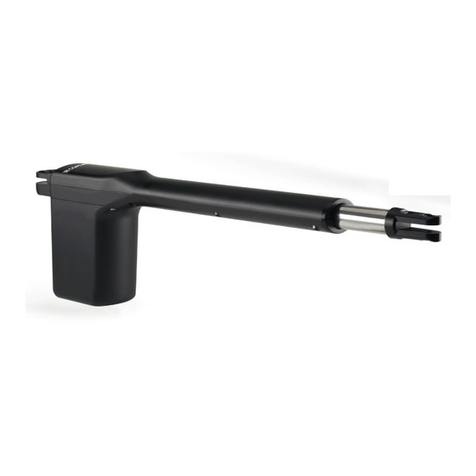
Comunello
Comunello RAM 220 Installation and user manual

Xylem
Xylem McDonnell & Miller 1575 Series instruction manual
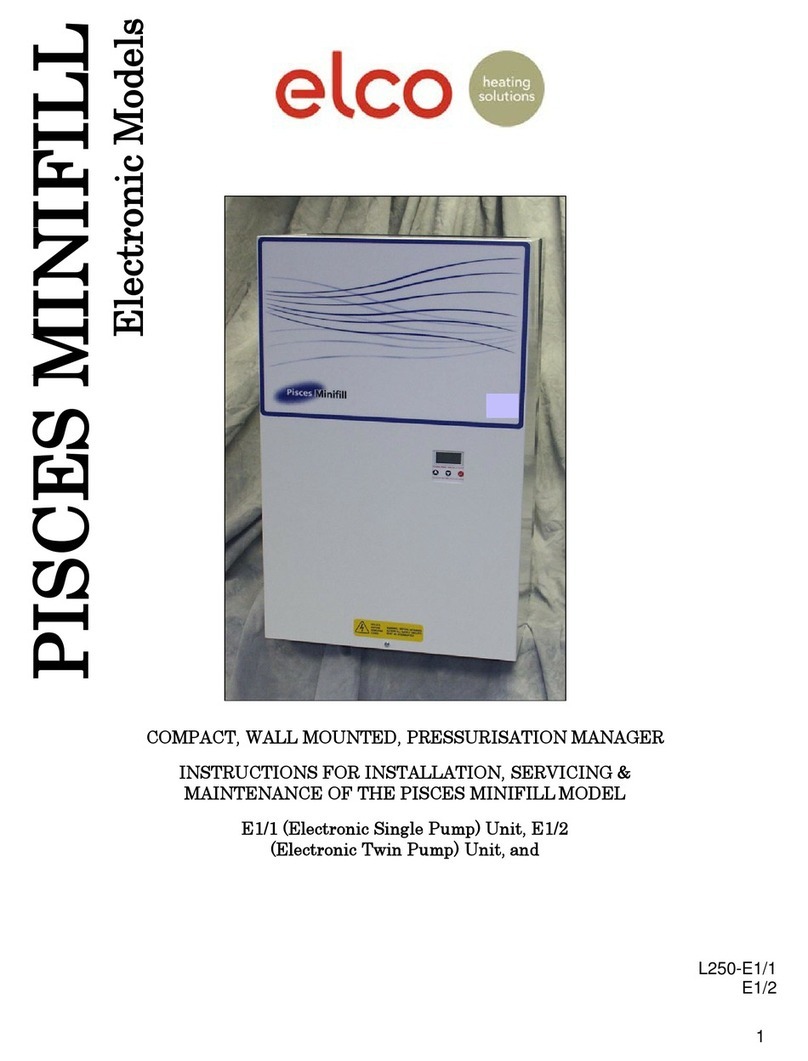
elco
elco PISCES MINIFILL E1/1 INSTRUCTIONS FOR INSTALLATION, SERVICING & MAINTENANCE
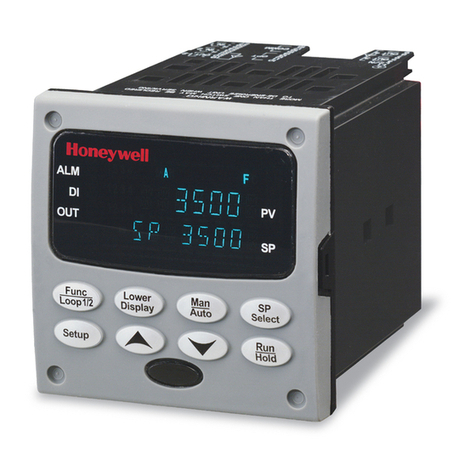
Honeywell
Honeywell UDC3500 Instruction
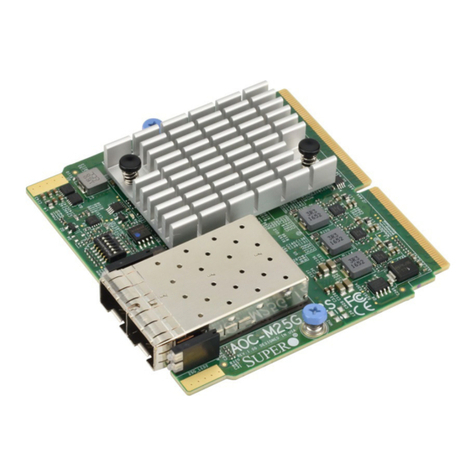
Supermicro
Supermicro AOC-M25G-i2S user guide
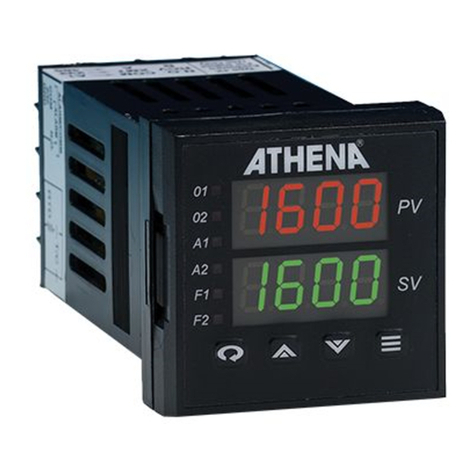
Athena Controls
Athena Controls 16C Series Operation manual

